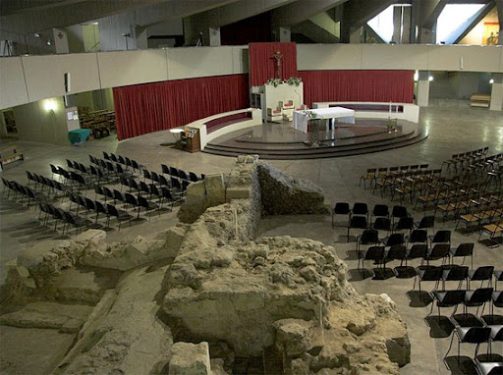The history of Syracuse is the history of one of the most important cities of Western Greekness, founded in the 8th century BC by Corinthian settlers, but with important evidence of indigenous cultures and precolonial contacts.
The city developed so rapidly that, within a very few years, the primitive nucleus consisting of the island of Ortigia was joined on the mainland by four other cities (Acradina, Tiche, Neapolis and Epipoli), and Syracuse became the “Pentapolis” par excellence.
Thanks to the activities of extraordinary leaders such as Gelon, Hieron, and Dionysius (5th century B.C.), the city became rich and powerful; it attracted the greatest poets and philosophers to itself and built the monument that most represents the power of Syracuse: the theater.
In the geopolitical balances of the ancient Mediterranean, Syracuse was always engaged in stemming any attempt at Punic expansion into Sicily. Memorable was Gelon’s victory in 480 BC, when he defeated Carthaginian troops near the Imera River (today Termini Imerese).
Syracuse had to defend its independence not only from Eastern enemies but also from Western ones. The second phase of the Peloponnesian War, fought between Sparta and Athens, moved from mainland Greece to the western colonies. Thus it was that Syracuse was besieged by the Athenian fleet; but thanks to the stratagem of closing the mouth of the harbor with a catenary, the besieging fleet found itself besieged. Athens was defeated by sea at Syracuse and in the vicinity of the Assinaro River by land troops (413 BC).
When Hieron II died (215 B.C.E.), he was succeeded by his nephew Hieronymus, who, unable to rule the city’s fortunes, preferred to ally with Carthage. The pentapolis was besieged by Rome’s troops, and in 213 BC it capitulated. After the Roman conquest began a slow decline halted in the 1st century BC with the city’s dedication as a colony; as part of further monumentalization of Neapolis, the Amphitheater and a monumental arch were built.
Christianity experienced rapid development in Syracuse: the size of the catacombs, second only to those in Rome, is irrefutable evidence of the large Christian community.
The crumbling of the empire of Rome was the cause of the Visigothic and Vandal invasions that raged in Sicily and Syracuse from the fourth to the early sixth century, until in 535 the island and the city were reannexed to Byzantium’s dominions through the military actions of Emperor Justinian.
The expansion of Islamism affected the coast of Sicily, and Syracuse often fell victim to Muslim attacks; when the Muslims undertook the systematic conquest of the island, after repeated raids and a terrible siege, the city capitulated on May 21, 878. With the Arab conquest of Sicily, the political center of the island shifted permanently from Syracuse to Palermo.
In 1038 the Byzantine general George Maniace managed to penetrate the city. Reconquered by the Arabs, the city remained in Muslim hands until 1086, when it was invaded by Norman troops. After the final conquest of Sicily, the Normans kept Palermo as their capital, and Syracuse played an entirely secondary role.
With the advent of the Crown of Aragon, from the late 1200s several cities in Sicily were given as “dowries” to the queen; Syracuse was its capital: a fiefdom-a sort of “state within the state”-which she administered through her own governors. This brought great economic prosperity to the city and a very wide cultural contamination attested by the surviving architecture. The Camera Reginale lasted until 1536 when Emperor Charles V no longer renewed the donation, effectively extinguishing the institution of the Camera.
From that time the city was enclosed by a mighty wall and fortifications in defense against the Turks. Syracuse was ruled by military authority. For the city it was the end of much economic activity; it is also a history punctuated by pestilence, famine and two terrible earthquakes: that of 1542 and that of 1693.
In 1735, when the crown of Sicily passed to the Bourbon dynasty of Naples, the city and the Kingdom went through a period of moderate reforms, which were abruptly halted with the advent of Napoleon.
Since the Unification of Italy and throughout the twentieth century, Syracuse has again expanded on the mainland. The Rettifilo (Corso Umberto) and the Borgata, built in the late nineteenth and early twentieth centuries, offer interesting solutions of Art Nouveau and Umbertine architecture.
Since the 1950s, major initiatives have been undertaken to restore the main monuments, with special emphasis on those enclosed in the Neapolis archaeological park, while the monumental and historical-artistic heritage of Ortigia enjoys special attention culminating in the 2005 UNESCO recognition.
Source: Syracuse – City of Syracuse



